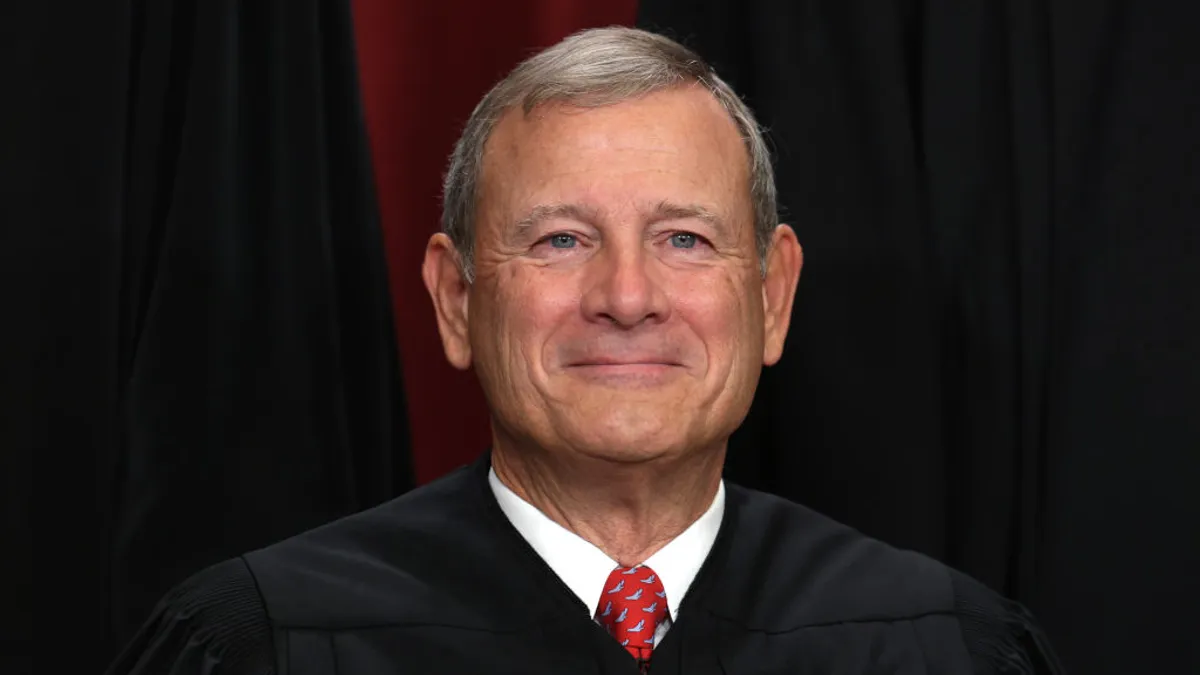Dive Brief:
- The U.S. Supreme Court stayed Wednesday a district court’s reinstatement of federal agency leaders dismissed by President Donald Trump before the expiration of their terms, including Democratic member of the National Labor Relations Board Gwynne Wilcox.
- An order signed by Chief Justice John Roberts issued a stay of two separate decisions of the U.S. District Court for the District of Columbia, one of which reinstated Wilcox and the other reinstating Cathy Harris, a former member of the Merit Systems Protection Board whose case has been consolidated with Wilcox’s.
- The Trump administration asked the Supreme Court to issue a stay just two days after the U.S. Circuit Court of Appeals for the D.C. Circuit held en banc to uphold the district court’s decisions allowing Wilcox and Harris to return to their posts. Roberts’ stay is pending further order of the high court, and he ordered Wilcox and Harris to respond to the Trump administration’s stay application by 5 p.m. on April 15, 2025.
Dive Insight:
Each of the lower courts involved in Wilcox’s lawsuit previously stated that the case was likely to be brought before the Supreme Court. The Trump administration has fought for weeks to uphold the dismissals of Wilcox and Harris despite criticism of the constitutionality of those dismissals.
The see-sawing nature of the lawsuit centers on arguments to revisit the Supreme Court’s 1935 decision in Humphrey’s Executor v. U.S., in which the court reaffirmed Congress’ power to create independent commissions whose members are protected from at-will removal by the president.
In Trump’s stay application, Solicitor General John Sauer wrote that Article II of the Constitution vests all executive power in the office of the president and that the president’s power to remove those who wield executive power on his behalf is unrestricted. Humphrey’s Executor “does not dictate a contrary result” in the present case, Sauer continued, because NLRB and MSPB wield “substantial executive power in implementing federal labor and civil-service laws.”
A majority of the D.C. Circuit, siding with the district court, wrote that the Supreme Court had not overturned its precedent on broad removal protections for multimember adjudicatory bodies and that, therefore, courts of appeal must follow that precedent unless the high court changes it or overturns it.
On the same day that Roberts issued his stay, Jocelyn Samuels, a former Democratic official of the U.S. Equal Employment Opportunity Commission who was similarly dismissed by Trump, sued the administration alleging that her termination was unconstitutional.
The outcome of both Wilcox’s and Samuels’ cases could have serious implications for the operation of federal agencies that could “ripple out to workplaces across the country,” Eric Meyer, partner at Pierson Ferdinand and author of The Employer Handbook blog, wrote Thursday.
“If presidents can fire agency leaders just because of political disagreements, the direction of agencies like the EEOC and NLRB could swing sharply with every new administration,” Meyer said.














